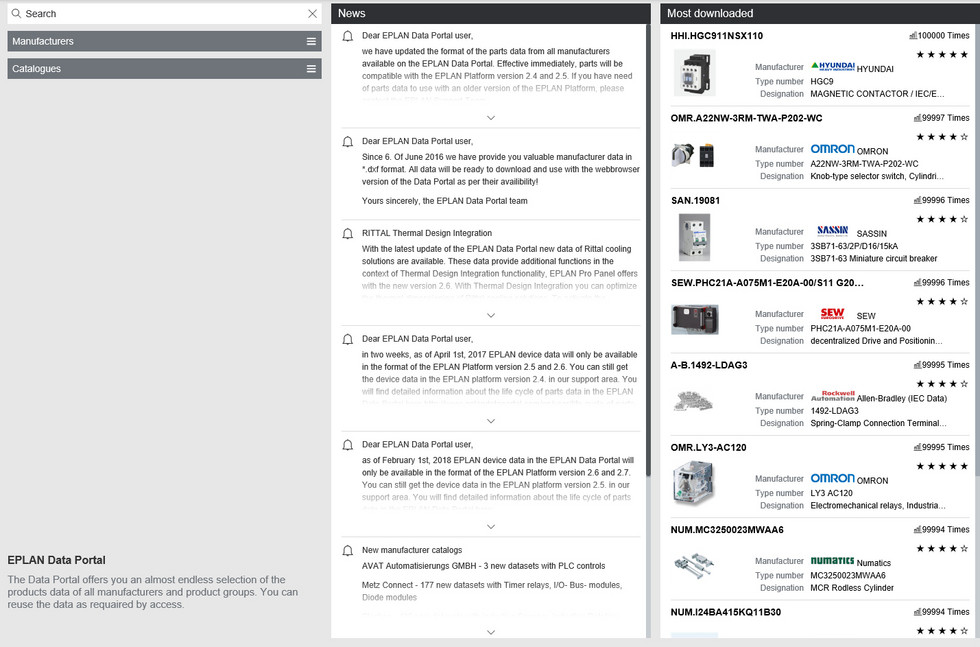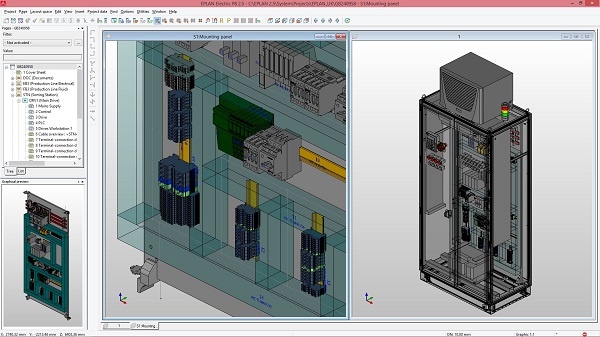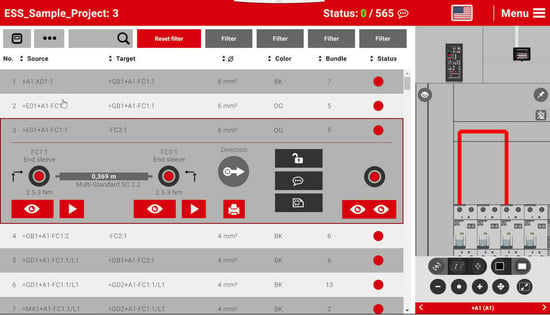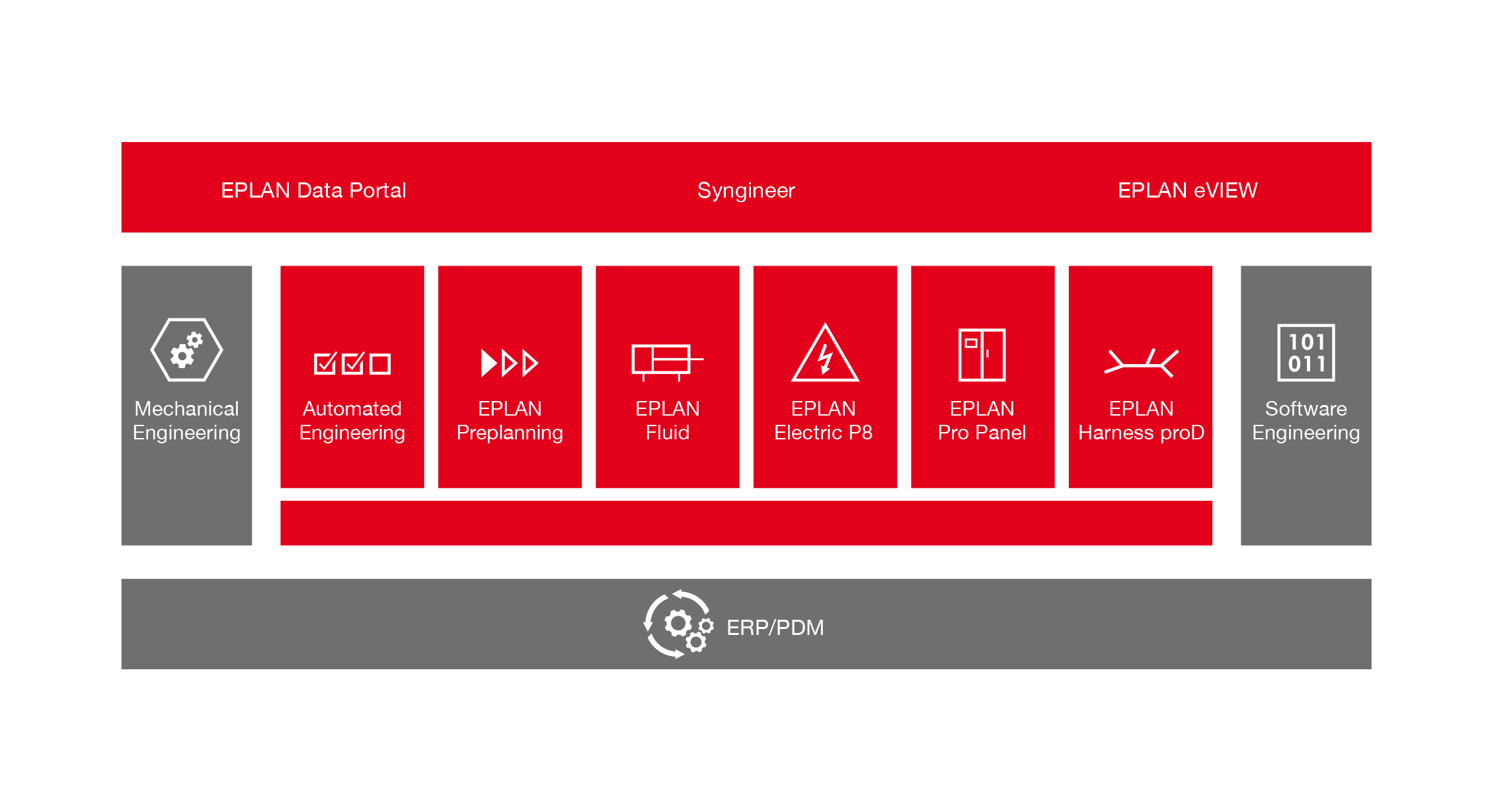Author
 Barry Chatham
Barry is a Business Consultant for EPLAN UK, working closely with the commercial team and a facilitator to the technical team in ensuring that EPLAN are delivering the right value at the right time to our customers.
Having graduated as an Industrial Designer and being deeply immersed in a wide range of disciplines, the learning curve in each of Barry's roles has been vast. This brings with it a wealth of experience, something demonstrable from recent years in CAD software such as Siemens PLM and more recently SolidWorks, where starting in technical and moving into commercial roles, Barry has successfully assisted hundreds of companies through transitional change and added value not only to his customers but heavily focusing on their customers and delivering results in dozens of different industries.
Having been asked the question years ago at an interview, it changed his outlook and discussions on the manufacturing industry, the question was "I make scissors in Sheffield as a consultant, I want you to make me more money"...
This question, and the "so what" methodology enabled Barry to see from a different perspective, something which is proving to be very well received with some of our customers already.
Chatham.b@eplan.co.uk
Barry Chatham auf LinkedIn
Barry Chatham
Barry is a Business Consultant for EPLAN UK, working closely with the commercial team and a facilitator to the technical team in ensuring that EPLAN are delivering the right value at the right time to our customers.
Having graduated as an Industrial Designer and being deeply immersed in a wide range of disciplines, the learning curve in each of Barry's roles has been vast. This brings with it a wealth of experience, something demonstrable from recent years in CAD software such as Siemens PLM and more recently SolidWorks, where starting in technical and moving into commercial roles, Barry has successfully assisted hundreds of companies through transitional change and added value not only to his customers but heavily focusing on their customers and delivering results in dozens of different industries.
Having been asked the question years ago at an interview, it changed his outlook and discussions on the manufacturing industry, the question was "I make scissors in Sheffield as a consultant, I want you to make me more money"...
This question, and the "so what" methodology enabled Barry to see from a different perspective, something which is proving to be very well received with some of our customers already.
Chatham.b@eplan.co.uk
Barry Chatham auf LinkedIn
The Sound of Value Creation
An enormous top hat, covered in tulle, surrounds the orchestra of the South Netherlands Philharmonic and serves as a projection screen during the staging of Carmina Burana. The images projected on it mirror the music. Ninety musicians reach for their instruments – strings, winds, percussion – and play the paean to Fortuna, the goddess of luck and fate. Establishing the perfect harmony between musicians so the music can move the audience – this is the art of an orchestra. Stefan Rosu, the orchestra’s artistic director, knows first-hand how difficult this can be.
Rosu emphasises the important role the conductor plays. “The conductor doesn’t contribute to the sound and doesn’t play an instrument,” he explains, “but this person makes it possible for the musicians to achieve a coordinated end result. The musicians wouldn’t be able to do it without a leader.” If the brass players are tuned lower than the rest of the orchestra, for instance, the entire orchestra sounds off. “That group of musicians would still say that they’re playing correctly,” Rosu says. The players rehearse for months at a time, both individually and as a group. The conductor brings it all together, harmonising the groups of instruments to create the standards necessary for cooperation.
Creating standards is also one of the crucial requirements for Industry 4.0. The central element behind it is the networking of intelligent products, production facilities, and all stakeholders and participants along the entire value chain. Data is to Industry 4.0 what tone is for an orchestra: it comes from various sources, but must be harmonised – and digitised so that it will always be available for further processing. Standards and interfaces ensure there is a uniform foundation for the seamless use and exchange of all data.
According to a study by the corporate consultancy PwC, the improved management of value chains is indeed a key driver in the rise of Industry 4.0. Companies surveyed expected productivity gains of more than 18 percent over the next five years because of it. A second driver is the digitisation and networking of products and services. The third key driver is the creation of new, disruptive digital business models with bespoke solutions for each customer. The authors of the study come to the following conclusion: the whole of development is closely linked to a considerable increase in cooperation across value chains, as well as with the integrated utilisation and analysis of data. Together these contribute to the better fulfilment of customer demands and often are what make new business models possible in the first place.
Uniform Database
The importance of a comprehensive, digital database in the context of value creation can be seen in an unusual example: a fitness app for pianists. The app developer Vladimir Viro has already programmed a search engine for classical music and is now developing an app inspired by popular fitness apps such as Runtastic. Jogging apps allow users to measure their performance while jogging and compare themselves to other joggers, while Viro’s app analyses how users play an electric piano.
Viro’s app provides an automatic evaluation of a musician’s abilities and how that musician compares to others. It also provides an audience – the app is meant to be listened to. It is basically an expansion of Viro’s search engine. It records the played music, searches for the applicable piece in the music database, and measures how precisely the player keeps to the notes. Using classical music, Viro has illustrated the essence of Industry 4.0: intelligent production through data standards and inter-faces. Musicians, publishers and listeners are being networked anew – and everyone benefits. With an app, all the links of the chain are easy to grasp. For many companies, however, each individual link in the value chain is often responsible for a highly complex entity. According to a study conducted by the technical university RWTH Aachen, titled “Beherrschung der Wert-schöpfungskette” (Mastery of the Value Chain), the management in industrial companies must ensure that all elements along the value chain collaborate efficiently. This is hampered by fragmented process chains, a large degree of variance in the product spectrum and a lack of standards with respect to resources within the network. As stated in the study, “A change in the distribution of added value should help reduce complexity.”
The key to this is data digitisation and standardisation, which also forms the basis for efficient value creation in the spirit of Industry 4.0. Information that arises at the beginning of the value chain must be further enhanced and made available at the other end of the chain as well. If necessary information is missing or if the data is incorrect, the entire value chain will grind to a halt. This is why EPLAN’s solutions rely on an integrated, digital database that is enhanced with additional data at every step of the process – starting with the master data. “With EPLAN Data Portal, we are offering a tool that supplies our customers with master data for components and circuits that manufacturers make directly available,” says Sebastian Seitz, CEO of EPLAN and CIDEON. “This is the central data source that creates the foundation for continuous value creation, from engineering to service.” EPLAN users can rate the data’s quality, giving manufacturers direct feedback from the market to optimise their input – a win-win situation. “These types of interactions increase the EPLAN Data Portal’s network effect,” Seitz explains. “The increasing number of users increases the added value for each individual user.”

EPLAN Data Portal - Device Data
Interfaces for Global Networks
While data represents added value for value creation, it also poses challenges when it cannot be utilised in an integrated fashion. The value chains of industrial companies often create vast amounts of data – for instance a variety of sensor and process data from manufacturing and logistics. A study by McKinsey found that in many companies, supply chain management is one of the first business units to get technology upgrades – particularly for applications that use data generated from ERP systems. The problem, however, is that these applications are often focused on only one individual business unit. These technologies often lack transformational capabilities: linking and combining cross-functional data from internal and external sources.
The large variance of available information and data in both supply chain management and in engineering reveals two aspects that are absolutely essential: first, there must be uniform, comprehensive standards for how data is presented, and, second, bidirectional interfaces are necessary so that data is automatically available where it is needed. Yet that’s not nearly everything: the aforementioned RWTH Aachen study comes to the conclusion that in addition to examining their own in-house networks, companies must also closely coordinate with clients and suppliers to ensure both order prioritisation across different plants and transparency of order status. A uniform IT structure is also essential in organising operations, and a globally standardised system landscape is conducive to this. Such standardisation brings high one-off charges, but it pays off over the long term, even for smaller companies. As the study indicates, heterogeneous IT systems generate their own high costs when it comes to new product developments across sites, product adaptations, or order postponements.
Sebastian Seitz also advocates for integrated IT structures within companies: “The value chain must remain consistent, even across companies. Our goal for EPLAN is to offer the leading digital platform for our customers to design their value chains as efficiently as possible. And not just across company locations, but globally – with all partners, suppliers and service providers.” Cloud solutions will allow this approach to be implemented even more efficiently in the future: “The cloud offers the crucial framework for generating maximum added value for our customers and partners with our software, our master data and our digital platform: it enables continuously updated data to be made available to all stakeholders at all times in all locations. This creates a foundation for optimising value creation, making it available globally.“

The EPLAN Platform
Value Chains in Switchgear Engineering
Switchgear and control cabinet engineering is a fitting demonstration of the added value that inter-company optimisation of the value chain can provide. “Control Cabinet Manufacturing 4.0“, a study by the Institute for Control Engineering of Machine Tools and Manufacturing Units (ISW) at the University of Stuttgart, has found that 49 percent of the total time required for manufacturing and assembly is needed for wiring alone. Download the study here. Since a control cabinet consists of a large number of components, mechanical assembly and wiring are tedious work steps that must be done manually. The study sees great savings potential in working with 3D models, which enable pre-assembly of terminals and of wires in the cabinet wiring during production planning: the length and wire thickness can be defined in advance. In this area alone, the study finds possible time savings of up to 35 percent. If the wiring is list-based, the potential goes up to 50 percent.
Just looking at these individual elements in manufacturing demonstrates how closely interwoven the links of the value chain are. If manufacturing is to be automated, these changes must start in the upstream engineering processes. "Software solutions, control cabinet technology and machines for automating production have already matured a great deal," says Thomas Weichsel, EPLAN Product Manager and Team Leader for Value Chain Software Solutions. "The greatest potential for increasing efficiency can less be found in incremental increases in the respective product performance and much more in optimising the product development process as a whole. In the future, engineering, work preparation and production must be organised in a continuous process. Automating and industrialising control cabinet manufacturing will only succeed if the value chain is digitally designed throughout and production requirements are taken into account in the planning stage. Digital device data, software-based tools and standardised interfaces to production are the prerequisites for this." EPLAN has been working together with Rittal, one of the world’s leading system suppliers for control cabinets, with the goal of optimising their customers’ value chains: “Together we are developing perfectly coordinated combinations of software solutions, system technology, machines and services,” Weichsel explains. “We integrate them into our customers’ value chains, starting with engineering, and then we continue to preplanning, production, commissioning and all the way to operations and maintenance.” The starting point for this process is again the master data: Rittal makes its article data available in the EPLAN Data Portal, which is integrated into EPLAN’s engineering platform. EPLAN Pro Panel enables 3D planning of the control cabinet. This digital consistency and continuity in planning is completed by interfaces to a variety of Rittal tools.

EPLAN Pro Panel - 3D design tool
Together with the virtual prototype, engineering forms the control centre for all downstream processes in control cabinet and switchgear construction using Rittal system solutions. Rittal supports production, from manual tools to fully automated systems. EPLAN Smart Wiring springs into action during the actual wiring process: the wiring technician, using a tablet with the program, is guided through each and every step. The added value of the fully automated value chain is then reflected in the actual product: throughput times are shorter, which means that the finished product arrives at the customer faster. Companies can be quick and responsive to new customer requirements, and subsequent changes can be implemented easily thanks to the integrated, digital project documentation.
 EPLAN Smart Wiring
EPLAN Smart Wiring
In Harmony
This example illustrates the central driver for Industry 4.0, as mentioned above in the PWC study: EPLAN and Rittal are working together to advance the optimisation of customer value chains. EPLAN’s digital platform connects various company departments, suppliers and service providers via a uniform database and cross-system interfaces. Moreover, the networking potential of the EPLAN Data Portal business model creates new added value for each new user.
The individual links of a value chain are like groups of instruments that are constantly communicating with one another to create a finely tuned piece of music. In Industry 4.0, all the links are represented in digital form. The creation of switchgear systems is no different: beginning with receipt of orders and continuing through engineering, manufacturing and maintenance, every link in the chain depends on no information going missing from the transfer of data from one software to another and no errors occurring due to manual processes. Just like an orchestra harmonises its sounds, industry needs to harmonise the digital databases of its value chains. This is the prerequisite for greater value creation, and therefore the added value for listeners and for customers.
Would you like a consultation to find out how EPLAN can help you stay ahead of the competition in Industry 4.0?




Comments